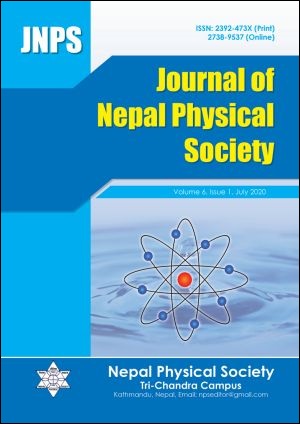Evaluation of Global Solar Radiation using Sunshine Hour, Temperature and Relative Humidity at Low Land Region of Nepal
DOI:
https://doi.org/10.3126/jnphyssoc.v6i1.30429Keywords:
Empirical models, Error analysis, Global solar radiation, Regression techniqueAbstract
The accurate knowledge of solar energy potential is essential for agricultural scientists, energy engineers, architects and hydrologists for relevant applications in concerned fields. It is cleanest and freely available renewable energy measured using CMP6 Pyranometer. However, it is quite challenging to acquire accurate solar radiation data in different locations of Nepal because of the high cost of instruments and maintenances. In these circumstances, it is essential to select an appropriate empirical model to predict global solar radiation for the use of future at low land, Nepalgunj (28.102°N, 81.668°E and alt. 165 masl) for the year 2011-2012. In this paper, six different empirical models have been used based on regression technique, provided the meteorological data. The empirical constants (a = 0.61, b = 0.05, c = -0.0012 and d = -0.017) are obtained to predict Global solar radiation. The values of statistical tools such as mean percentage error, mean bias error, root mean square error, and coefficient of determination obtained for Abdalla model are 1.99%, 0.003 MJ/m2/day, 2.04 MJ/m2/day and 0.74 respectively. Using the error analysis, it is concluded that the Abdalla model is better than others. So the empirical constants of this model are utilized to predict the global solar radiation to the similar geographical sites of Nepal for the years to come and it can be used to estimate the missing data of solar radiation for the respective sites.
Downloads
Downloads
Published
How to Cite
Issue
Section
License
All right reserved. No part of this Journal may be reproduced in any form or by any electronic or mechanical means, including information storage and retrieval system, without permission in writing from the publisher, except by a reviewer who may quote brief passage in a review. The views and interpretation in this journal are those of author(s) and they are not attributable to the NPS.




